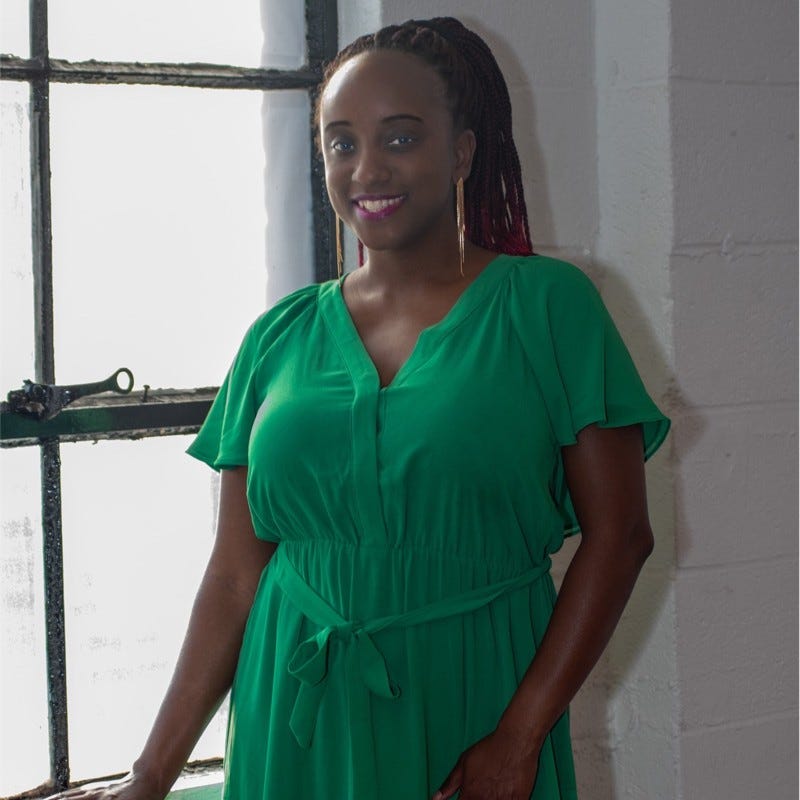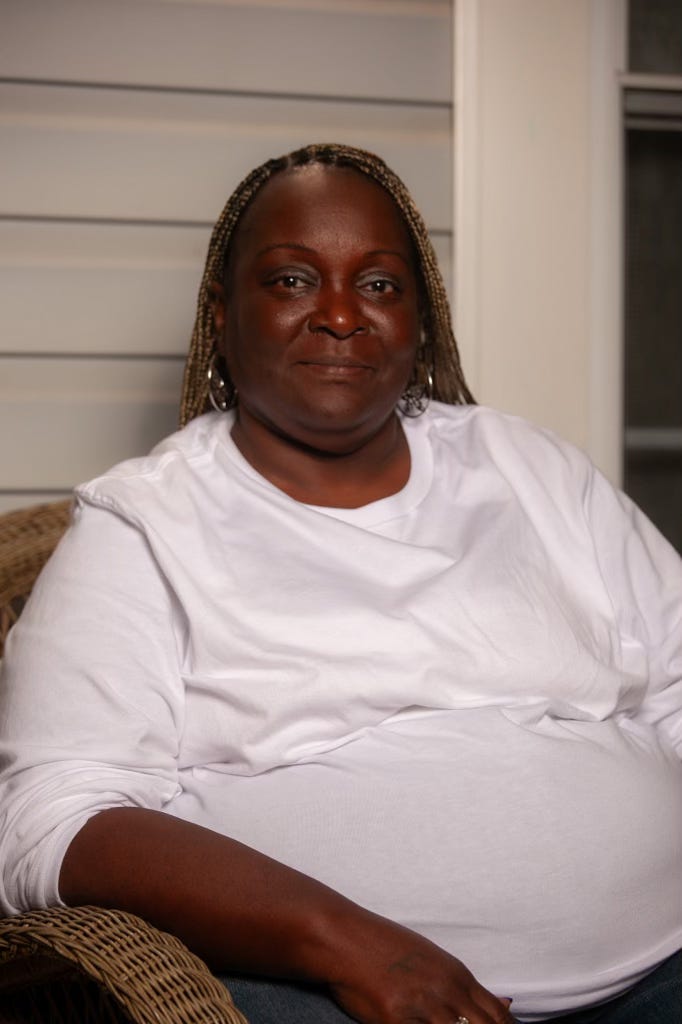The HIV Crisis People Aren't Talking About: Why Black Women Are 10 Times More at Risk
Black women make up 50% of new HIV diagnoses among women and are 10 times more likely to have an HIV diagnosis than their White counterparts. Why?
Kennedi Lowman thought it was another routine blood donation day. But in a single moment, her life was forever altered—shocked by an HIV-positive diagnosis she never saw coming.
“It was scary, heartbreaking, and shameful. Working in medicine and having my degrees, knowing what I knew about STIs. ‘Why me? How me?'” Lowman told Uncloseted Media.
Lowman, a 37-year-old Black woman in Atlanta, Georgia, was a medical technologist at the time of her 2016 diagnosis, which came as a total shock. “I was just crying day and night, I was crying driving to work, I cried in the shower,” she says, adding that the diagnosis pushed her into a “deep, dark depression” for two years.
Once she pushed past her depression, Lowman—who believes she contracted HIV from her friends-with-benefits partner—turned her pain into purpose and became an advocate in Georgia’s HIV community. She co-founded LOTUS, an Atlanta-based organization that assists women living with HIV across the U.S.
Black women like Lowman make up 50% of new HIV diagnoses among women. According to the Centers for Disease Control and Prevention, Black women are 10 times more likely to have an HIV diagnosis than their White counterparts and three times more likely to contract the virus than Latina women.
“What we have not seen is a significant financial investment into creating infrastructure and strategy that addresses the issues that position black women to be disproportionately impacted,” Leisha McKinley-Beach, founder and CEO of the Black Public Health Academy, told Uncloseted Media. “[These issues] include lack of education and awareness, as well the age-old foundation for poor health outcomes in black communities as a whole [that’s fueled by] institutional racism within our public health infrastructure.”
One factor that may contribute to higher rates of HIV among Black women is that Black men are less likely than men of other racial groups to disclose their same-sex behaviors, which may contribute to a higher risk of contracting HIV.
“A woman may have one partner, and that's one of her ways of staying safe, but if she doesn't know the partner's status, that places her at risk,” says Oni Blackstock, a primary care and HIV physician and founder of Health Justice, a consulting firm that teaches health organizations how to prioritize anti-racism.
Research from 2008 found that down-low (DL) culture, where men who identify as heterosexual hook up with guys in secret, may contribute to why Black women are disproportionately affected by HIV. However, Blackstock says this narrative is stigmatizing and doesn’t tell the whole story.
“What it ends up doing is further othering and stigmatizing Black, same-gender-loving men,” says Blackstock.
Mia Allison, a 58-year-old Black woman from Demopolis, Alabama, found out that she had HIV in 2017 after being hospitalized for a mild stroke.
“[The team at the hospital] came back in the room and told me that I was a smidgen from full-blown AIDS, but I was HIV positive, and that really changed my life,” Allison told Uncloseted Media.
After learning of her diagnosis, Allison later found out that a past hookup partner, who passed away in 2019, had been rumored to be dating both men and women.
She remembers calling him before his passing after hearing he wasn’t doing well. He asked her if she was still experiencing headaches and suggested she see a doctor. “I do believe that he was trying to tell me [that I possibly had HIV], but just didn't know how to say it,” says Allison.
Allison, who is a pastor at a non-denominational church in Atlanta, had already been helping HIV-positive people find care before her diagnosis. She says that her sermons focus on accepting everyone regardless of sexual orientation, gender identity or HIV status. “When I speak at different conferences and when I say that I'm a pastor … I can see the expression on people's faces change because [HIV] is not talked about [in the church],” she says.
“I thought God was mad with me and cast a spell on me, because I'm preaching, I'm teaching, I'm helping the sick, I'm feeding the poor, and now this happened to me. ‘Why me?’” says Allison.
Christianity and the Black Church have been found to play a significant role in the stigma surrounding HIV and homosexuality.
“DL culture is very strong in the church,” says Natalie Farrior, a 29-year-old Black woman with HIV from North Carolina. “[Many people believe that] you're possessed by the devil if you're gay.”
Farrior says that DL guys she’s hooked up with have told her that they aren’t out of the closet because of religion, gang activity, having a child, having a female partner or not wanting to be deemed as “not masculine.”
“That poses a risk for the health of not only Black men, but Black women as well, because now you have someone that has to hide their identity and their preferences, so they're going to find it in whatever they can and practice a lot of unsafe activity,” Farrior says.
Marnina Miller, a 35-year-old Black woman with HIV from Benton Harbor, Michigan, says anti-LGBTQ hate is a driving factor behind the high rates of HIV among Black women. “The harmful thing is the homophobia and transphobia in Black and Brown communities,” she says, adding that this hate is fueled by church leaders and policymakers that have prevented access to HIV prevention care and medicine.
In addition to stigma, Miller, who is also the co-executive director of the Positive Women's Network, a national organization of women living with HIV, points to a lack of education about HIV in religious circles. She says that while growing up in the church, she was educated about some STIs and taught not to get pregnant, but she learned nothing about HIV.
Due to a history of systemic racism in America, Black people in the U.S. continue to be disproportionately affected by poverty. Data shows that the typical White household had 9.2 times as much wealth as a Black household in 2021.
A lack of access to economic and educational resources is linked to the practice of riskier health behaviors, such as substance abuse, which reduce the likelihood that someone will use a condom during sex. Homelessness and food insecurity can also lead to the exchange of sex for money, safety or housing.
In addition to all of this, Miller says there are high levels of medical distrust among Black and Brown women.
“After the Tuskegee family, a lot of people still don't trust providers,” Lowman says.
The Tuskegee Study of Untreated Syphilis in Black Men was an ethically unjustified study that was conducted from 1932 to 1972 and was supposed to look at the natural progression of untreated syphilis. However, researchers failed to collect informed consent from patients and did not offer treatment even after antibiotics were readily available.
The study is just one example of race-based malpractice over the last century. Black women were forcibly sterilized throughout the 1900s, and their cervical cells were harvested and studied without consent. Today, 55% of Black Americans believe nonconsensual experiments are being conducted on Black people.
In addition, a 2024 Pew Research Center study found that a majority of Black Americans have had negative experiences with healthcare providers, including feeling like their pain was not taken seriously. One in five Black women say they’ve been treated unfairly by a healthcare provider because of their background.
“A lot of time we also have providers who are being gatekeepers and they're bringing their biases and their racism and their sexism to these encounters,” says Blackstock.
A 2021 study found that providers who scored high on a racism measure were less willing to discuss and prescribe pre-exposure prophylaxis (PrEP)—a medicine that reduces the risk of getting HIV by roughly 99% and is considered integral to ending the epidemic—to Black patients.
Allison remembers experiencing bad migraines before her diagnosis. Her doctor prescribed her narcotics and Percocets for the pain, but she was later hospitalized due to a stroke and didn’t find out she had HIV until after she had spent five months in the hospital.
Michael Fordham, program manager of the leading HIV clinic at the University of Alabama at Birmingham, says symptoms related to HIV can mimic the flu or hide under other illnesses, such as cancer or pneumonia. Because of this, testing is essential. “[Patients] could be going in because they've got a really high fever, chills, and they're like, ‘I think I have the flu.’ Well, ironically, those are the same symptoms of what we call acute HIV infection,” says Fordham, adding that his hospital automatically tests patients for HIV unless they opt-out.
McKinley-Beach says that many clinicians are not bringing up PrEP to women. Instead, she says they recommend avoiding “high-risk” behaviors.
She says this is compounded by a lack of Black women featured in PrEP marketing campaigns. “Many of us are making medical decisions based on what we see on television,” she says. “Think about people who are flocking into their doctor's office asking about Ozempic. Where did they first hear about it? They saw a commercial about it. And they saw women dancing and living their best lives. This [representation] is a key tool necessary for helping to raise awareness and scale up PrEP use among Black women.”
Despite the alarmingly high HIV rates among Black women in the U.S., prevention medication is more accessible than ever. Medicare, Medicaid and most private insurance companies cover some sort of HIV prevention medication. But for the many Black women in the U.S. who don't have free health insurance, it may be more difficult to access, Fordham says. He adds that pharmaceutical companies may cover the medication in full, but clinics may struggle to cover the cost of the regular blood work and visits needed to remain on the medication.
A new form of PrEP, Lenacapiver, has shown to be 100% effective for HIV prevention for cisgender women.
“It's not yet commercially approved … But it's got the potential to be a real game changer,” says Fordham, adding that a nurse-administered injectable may garner more interest from women because there isn’t a pill bottle that a husband or child may question.
In addition to prevention medication like PrEP, McKinley-Beach, a founding member of PrEP in Black America, says testing is essential. She says her home church, the Dream Center Church of Atlanta, conducts HIV testing on Mother’s Day.
“Having those discussions and hearing from our leaders is significant in how many of us choose to navigate things such as HIV testing,” says McKinley-Beach.
Fordham suggests implementing HIV testing into regular appointments, such as OBGYN visits for women, to avoid having to deal with the stigma around HIV. “[Women] don't want to be seen in the HIV clinic because people might associate them with having [the virus],” he says.
Overall, new HIV diagnoses have largely declined worldwide as of 2023, with a 39% decrease since 2010 and a 60% decrease since HIV’s peak in 1995.
“Can it be scary? Yes. Can it be tiresome? Yes,” says Mia Allison, the pastor from rural Alabama who has been living with HIV since 2017. “But again, I tell anybody, you can live a vibrant and productive life.”
Editor’s note: A previous version of this story erroneously mischaracterized a study about Black women’s sexual activity.
If objective, nonpartisan, rigorous, LGBTQ-focused journalism is important to you, please consider making a tax-deductible donation through our fiscal sponsor, Resource Impact, by clicking this button:










